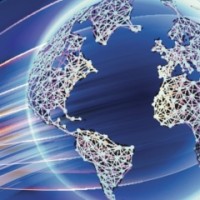This process began 3 years ago, during the Río +20 Conference in June 2012. Since then, a very intensive, wide and open consultation with a multistakeholder perspective all across the World was launched through My World UN survey, to define these objectives and more than 7 million people contributed to this definition!
Telefónica actively contributed to widespread this consultation promoting the initiative My World in Spain and in Latin America but also the personal stories of people linked to a sustainable development (see here for more information), through expositions in Madrid and in other cities.
This new Agenda is a plan of action for people, planet and prosperity, based on 3 main pillars & goals:
- End extreme poverty
- Fight inequality & injustice
- Fix climate change
To reach these -ambitious but needed- objectives, 17 goals based on 169 targets have been approved. You can find a wide description of all of them here.
As you can imagine, these are ambitious goals and we must all work in the same way: everybody should actively contribute to reach them, with a multistakeholder approach, from Public administrations to private sectors, with the support of international organizations and the civil society.
In this context, however, our sector and our activity, the ICT & digital sector, is a clear key enabler to achieve the SDGs worldwide, improving the economic development, facilitating the social inclusion and allowing a better environmental protection.
How? you may ask…
Let´s have a quick review of each goal and the possibilities offered by our ICT & digital sector and the activities already ongoing.
Goal 1: End Poverty in all its forms everywhere
Goal 2: Hunger & Food Security
Goal 3: Health & Well-being
Goal 4: Education
In the same way, the initiative Miriadax in Spanish & Portuguese is one example on how our sector could actively contribute to widespread knowledge and the possibility to easily increase the levels of education and they are many other examples provided by our sector.
Goal 5: Gender
In my next post, we will talk about the rest of the SGDs approved and how ICTs could also contribute to improve them. The transversal perspective offered by new technologies and digital services allow them to be a key element, an opportunity to serve the Sustainable Development Goals, creating relevant synergies and work for a better World for every Human on Earth.
